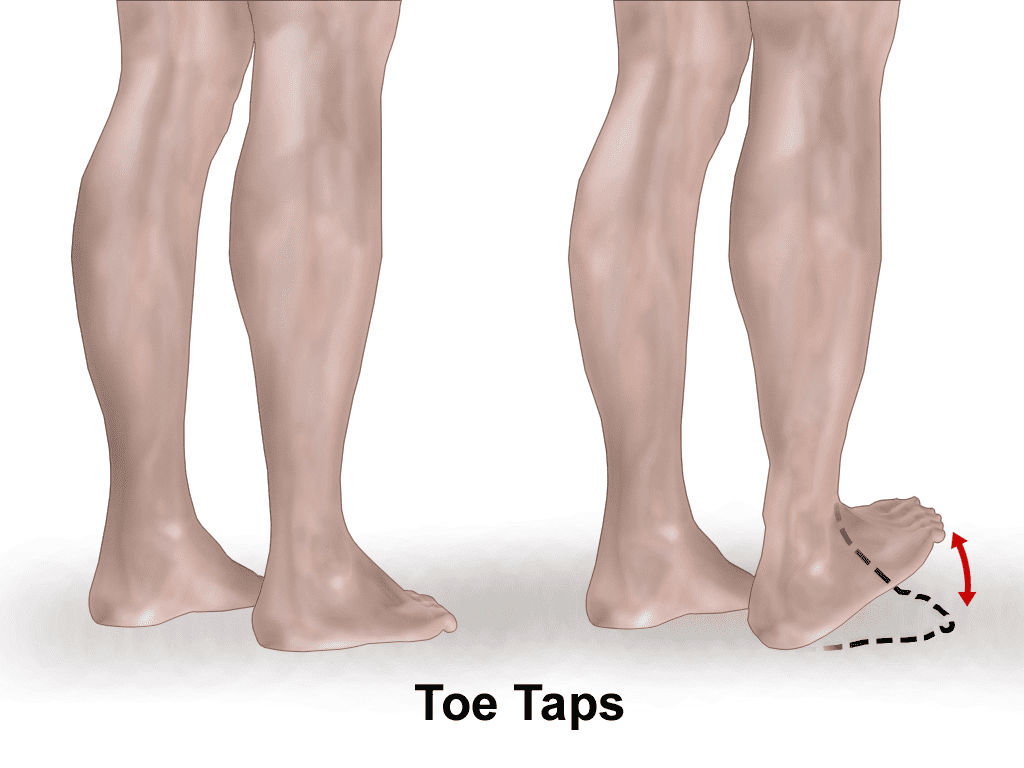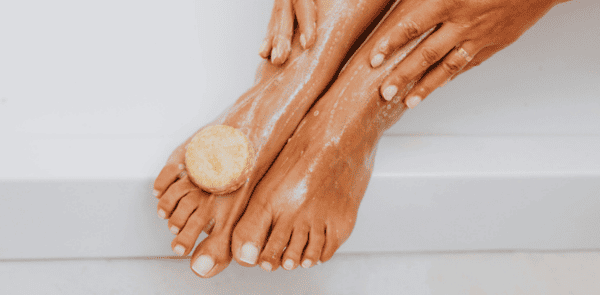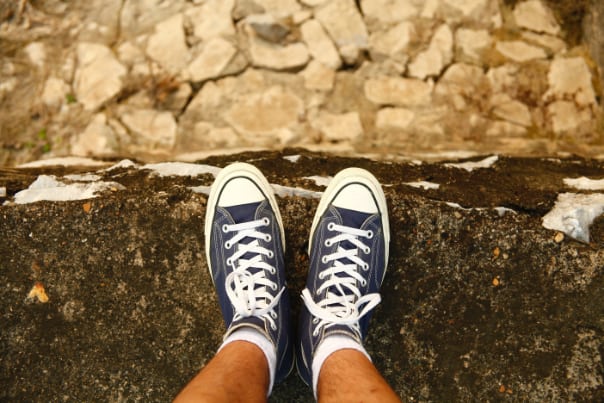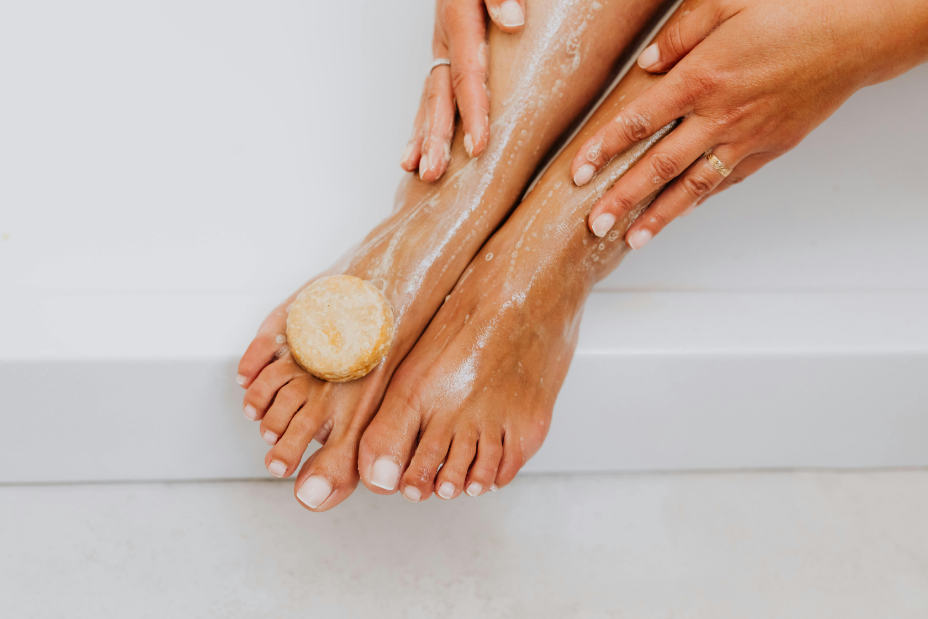Your feet bear the weight of your daily activities. Caring for them is essential for overall well-being. In this guide, we’ll explore simple yet effective ways to improve your foot health. From understanding the anatomy to choosing the right footwear – and more, we’ve got you covered. Follow along for a quick read that can make a huge difference in how you care for your ‘pedals’.
The ABCs of Optimal Foot Wellness
The foot is like a well-designed machine comprising three main parts:
- forefoot (front)
- midfoot (middle)
- hindfoot (back)
The toes, metatarsals, and the ball of the foot make up the forefoot. These limb structures are responsible for push-off when walking. The midfoot forms the arch, supporting body weight and providing flexibility. The hindfoot, including the heel and ankle, ensures stability.
Despite this complexity, common foot problems can arise. Issues like bunions, corns, and calluses often result from wearing tight shoes or excessive pressure. Ingrown toenails, if not addressed, can lead to infections. Foot pain, if persistent, may indicate conditions like plantar fasciitis. Neglecting foot health can impact mobility and overall well-being.
Knowing how your foot is built and being aware of possible issues helps you take better care. Wear the right shoes, keep your feet clean, and consult a professional if problems persist. Taking these steps early on is key to keeping your feet healthy.
Choosing the Right Footwear
The importance of proper shoe selection cannot be overstated. For one, it directly impacts comfort, support, and overall well-being. Here are some tips to guide you in choosing comfortable and supportive footwear:
- Proper fit: Ensure your shoes fit well, with enough room for toes to move. Avoid shoes that squeeze or rub for a better fit and enhanced comfort throughout the day.
- Arch support: Look for shoes with adequate foot arch support. This will help promote proper alignment and reduce strain on the feet.
- Cushioning: Opt for shoes with cushion or heel support to provide extra comfort. This added shock absorption is beneficial for your feet. It especially comes in handy during high-impact activities or extended periods of wear.
- Material matters: Choose breathable materials to prevent moisture buildup. This, in turn, also helps reduce the risk of fungal infections. A well-ventilated footwear, for one, promotes a healthier foot environment, especially in warm weather.
- Activity-specific shoes: Wear shoes designed for the activity. Running shoes for jogging or work boots for labour-intensive jobs, to name a few. The right footwear enhances performance and protects your feet from stress.
- Regular checks: Periodically assess your shoe for signs of wear and tear. If you notice flattened arches or worn-out soles, it’s time for a replacement. Keeping your footwear in good condition ensures ongoing support for your feet. It helps prevent discomfort or potential issues in the long run.
By prioritising footwear, you contribute to the long-term health of your feet.
Practising Good Foot Hygiene
Maintaining clean feet isn’t just about preventing unpleasant odours; it’s essential for their well-being. Regular cleaning helps prevent common issues like fungal infections and skin conditions. Clean feet also minimise the risk of bacterial growth and discomfort. It ensures a pleasant and hygienic experience.
Prioritising cleanliness also helps prevent health issues linked to neglect. By incorporating simple daily hygiene practices, you care for your feet appearance. Most importantly, you ensure their long-term health and comfort.
Tips
- Daily wash: Clean your feet with a mild, antibacterial soap and lukewarm water daily. Pay extra attention to the areas between your toes and under your nails. This helps remove accumulated sweat and bacteria, promoting a fresh and clean feel..
- Dry thoroughly: After washing, pat your feet dry with a soft towel. Pay special attention to the spaces between your toes. Ensure your feet are completely dry, as moisture can contribute to fungal growth. This step not only prevents discomfort but also reduces the risk of infections.
- Moisturise: Apply a quality foot moisturiser. Focus on the heels and any areas prone to dryness. This not only prevents cracked and rough skin but also maintains the skin’s elasticity.
- Nail care: Regularly trim your nails straight across to prevent ingrown toenails. Use a nail file to smooth any rough edges. This simple practice safeguards against painful ingrown nails and promotes overall nail health.
- Breathable footwear: Opt for shoes made of natural, breathable materials. Leather or mesh is your best bet. This choice allows air circulation, reducing the risk of moisture buildup.
- Rotate shoes: Allow shoes to air out and alternate between pairs. This practice helps extend the life of your shoes. Plus, it minimises bacterial and fungal growth for a more hygienic foot environment.
- Regular inspections: Check for any signs of redness, swelling, or unusual marks. Regular care ensures a solid foundation for your foot health. Seek prompt professional advice if needed.
Regular Foot Exercises
 (Image Credit: Wikimedia Commons)
(Image Credit: Wikimedia Commons)
Strengthening your feet is a simple yet effective way to support overall foot health. Incorporate these easy exercises into your routine for stronger, more resilient feet.
- Toe-tapping: While seated, lift your toes and tap them on the floor for one minute. This boosts circulation and strengthens toe muscles.
- Toe spread: Sit or stand, then spread your toes apart as far as possible. Hold for a few seconds and release. Repeat ten times to enhance flexibility.
- Ankle circles: Lift one foot and rotate your ankle clockwise, then counterclockwise. Switch feet and repeat. This exercise promotes ankle strength and flexibility.
Equipment recommendations
For added resistance, use resistance bands or a small Swiss ball during toe-tapping. To enhance toe spread, use toe separators. Ankle circles can be intensified with a resistance band looped around the foot. These low-cost additions elevate your foot-strengthening routine.
Flexibility matters
Don’t overlook flexibility, as it’s essential for optimal foot health. Gentle stretching exercises, like flexing and pointing your toes, reduce stiffness. Incorporate these exercises into your routine to prevent issues associated with muscle tightness.
Avoiding Common Foot Issues
Preventing common foot problems is key to maintaining happy, healthy feet. Here are tips to steer clear of issues like blisters, calluses, and ingrown toenails:
- Choose proper footwear: Select shoes made of breathable materials to minimise moisture buildup. Ensure your shoes have arch support gel pads, absorbing shock and reducing impact. Rotate between different pairs to allow them to air out.
- Maintain healthy toenails: Trim your toenails after a shower when they are softer. Avoid rounding the edges to prevent ingrown toels, and file any sharp edges.
- Stay moisturised: Choose foot-specific moisturises with ingredients like urea or glycerin. Such properties can help prevent dryness and cracks. Pay special attention to areas prone to calluses, such as heels and the sides of your feet.
- Socks matter: Opt for moisture-wicking socks made from cotton or bamboo. Change socks if they become damp, especially during physical activities. Seamless socks can also reduce friction and the risk of blisters.
- Foot hygiene: Wash your feet daily with mild soap, ensuring to dry thoroughly. Make sure to include the spaces between your toes. Use antifungal powder or spray if you’re prone to sweating.
Round-up
The path to optimal foot health is paved with simple yet impactful practices. These outlined habits contribute to a solid foundation for your feet. By following these tips every day, you make a big step towards keeping your feet healthy in the long run.
Explore a range of foot care essentials at Physioroom today. Dicover everything you need, from orthotic insoles to toe supports. Shop now and prioritize your well-being with our extensive selection!
Next on your reading list: What Are Bunions?



 (
( (
(